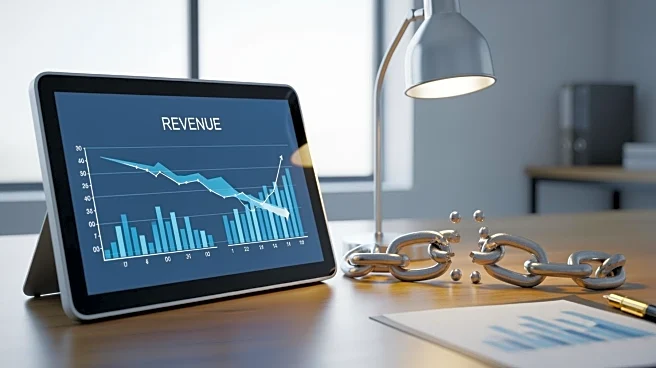What's Happening?
BT Group has announced its financial results for the first half of the year, reporting a revenue of $12.8 billion, which marks a 3% decline compared to the previous year. The company attributes this decrease
to ongoing declines in legacy voice services, softer mobile handset sales, and reduced international trading. However, these were partially offset by a stronger fiber-to-the-premises (FTTP) mix within its telecom infrastructure division, Openreach. BT's adjusted EBITDA remained stable at £4.1 billion, as cost transformation efforts countered pressures from legacy declines and increased wage costs. The company has made significant strides in its FTTP rollout, achieving a record 2.2 million premises built in the first half, bringing total coverage to 20.3 million, including 5.5 million rural locations. BT aims to reach 25 million premises by December 2026. Additionally, BT's mobile division, EE, has expanded its 5G coverage to 66% of the UK population, with plans to achieve full coverage by fiscal year 2030.
Why It's Important?
BT's financial performance and strategic initiatives are crucial for the UK's telecommunications landscape. The company's efforts in expanding FTTP and 5G coverage are pivotal in enhancing digital connectivity across the nation, particularly in rural areas. This expansion supports the UK's digital infrastructure, potentially boosting economic activities and enabling technological advancements. The decline in legacy services highlights the industry's shift towards more modern and efficient technologies, which could lead to increased competition and innovation. BT's focus on cost transformation and infrastructure development positions it as a key player in the UK's digital transformation, impacting consumers, businesses, and public services by providing faster and more reliable internet access.
What's Next?
BT plans to continue its aggressive FTTP rollout, aiming to cover 25 million premises by December 2026. The company is also working on expanding its 5G+ network, with a target to reach over 130 towns and cities by the end of 2025 and cover 41 million people by spring 2026. These initiatives are expected to enhance broadband access and mobile connectivity across the UK, potentially leading to increased customer growth and market share. BT's partnership with Starlink to improve broadband access in remote areas further underscores its commitment to bridging the digital divide. As BT progresses with these plans, stakeholders, including consumers, businesses, and government entities, will likely monitor the impact on service quality and pricing.
Beyond the Headlines
BT's strategic focus on expanding digital infrastructure raises important considerations regarding the ethical and environmental implications of such large-scale projects. The deployment of FTTP and 5G networks involves significant resource allocation and environmental impact, which may prompt discussions on sustainable practices within the telecommunications industry. Additionally, the increased connectivity could lead to broader societal changes, such as shifts in remote work dynamics and digital inclusion, potentially influencing cultural and economic patterns in the UK.












